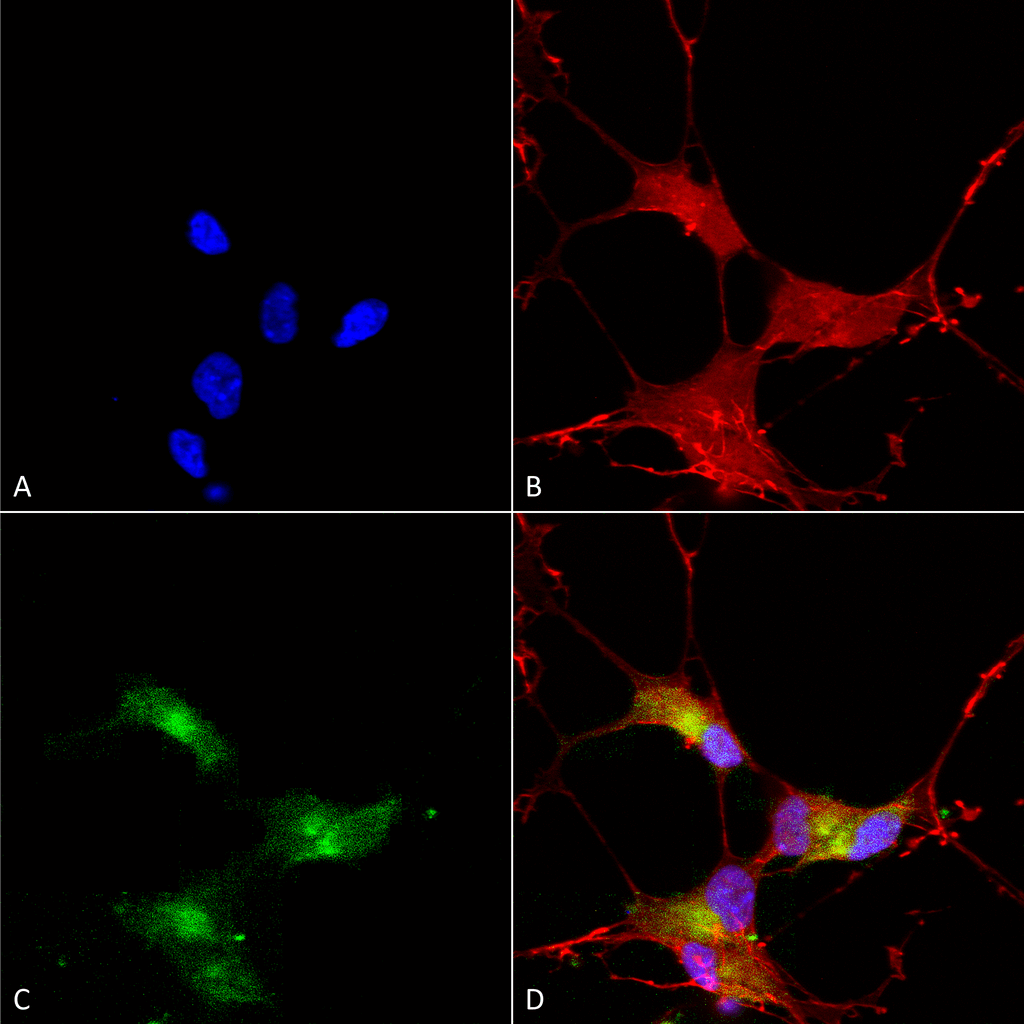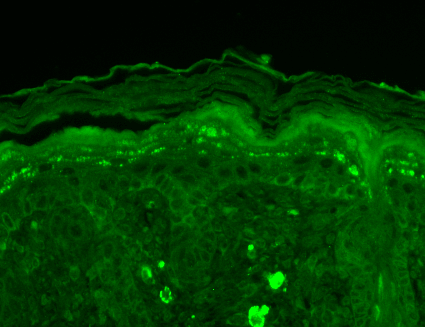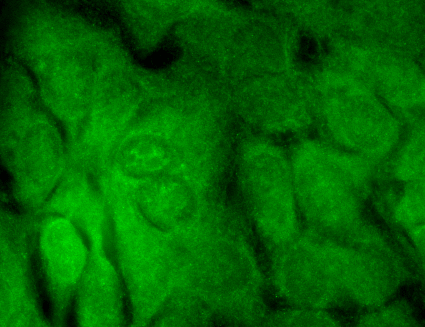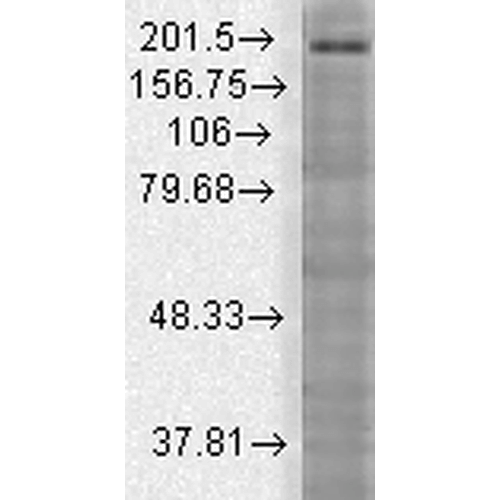SMC-336D-A390
Scientist.com Supplier
SHANK3 Antibody, Clone S69: ATTO 390
Stressmarq Biosciences
Image

Image

Image

Image

DESCRIPTION
Mouse Anti-Rat SHANK3 Monoclonal IgG2b
DETAILS
- Target: SHANK3
- Gene Id: 59312
- Isotype: IgG2b
- Conjugate: ATTO 390
- Immunogen: Synthetic peptide amino acids 840-857 of rat Shank3
- References: 1. Sheng M., and Kim E. (2000) Journal of Cell Science. 113: 1851-1856. 2. Schuetz G., et al. (2004) JCB. 167(5): 645-952. 3. Durand C.M., et al. (2007) Nature Genetics. 39: 25-27.
- Swiss-prot: Q9JLU4
- Specificity: Detects ~190kDa. No cross-reactivity against Shank1 or Shank2.
- Applications: WB | IHC | ICC/IF | IP | AM
- Clone Number: S69
- Field of Use: Not for use in humans. Not for use in diagnostics or therapeutics. For in vitro research use only.
- Host Species: Mouse
- Product Type: Monoclonal
- Purification: Protein G Purified
- Concentration: 1 mg/ml
- Research Areas: Neuroscience | Cell Markers | Neuron Markers | Postsynaptic Markers
- Storage Buffer: PBS pH7.4, 50% glycerol, 0.09% sodium azide *Storage buffer may change when conjugated
- Accession Number: NP_067708.1
- Alternative Names: AI841104 antibody, DEL22q13.3 antibody, KIAA1650 antibody, Proline rich synapse associated protein 2 antibody, Proline-rich synapse-associated protein 2 antibody, ProSAP2 antibody, PSAP2 antibody, SH3 and multiple ankyrin repeat domains 3 antibody, SH3 and multiple ankyrin repeat domains protein 3 antibody SH3/ankyrin domain gene 3 antibody, SHAN3_HUMAN antibody, Shank postsynaptic density protein antibody, Shank3 antibody, Shank3b antibody, SPANK 2 antibody, SPANK2 antibody
- Antibody Dilution: WB (1:1000), IHC (1:100), ICC/IF (1:100); optimal dilutions for assays should be determined by the user.
- Cite This Product: StressMarq Biosciences Cat# SMC-336D-A390, RRID: AB_2700584
- Immunogen Species: Rat
- Storage Temperature: Conjugated antibodies should be stored according to the product label
- Shipping Temperature: Blue Ice or 4ºC
- Cellular Localization: Cytoplasm | Cell Junction | Synapse | Postsynaptic Cell Membrane | Postsynaptic Density
- Scientific Background: Shank proteins make up a family of scaffold proteins identified through their interaction with a variety of membrane and cytoplasmic proteins (1). Shank proteins at postsynaptic sites of excitatory synapses play roles in signal transmission into the postsynaptic neuron. Shank proteins are also crucial in receptor tyrosine kinase signaling; specifically, Shank3 can mediate Erk-MAPK and P13K signaling which is crucial for tubule formation (2). Shank3 is also one of the latest genes to be associated with autism. A mutation of a single copy of Shank3 on chromosome 22q13 can result in language and/or social communication disorders (3).
- Certificate of Analysis: 1 µg/ml of SMC-336 was sufficient for detection of Shank3 in 10 µg COS cell lysate transiently transfected with Shank3 by colorimetric immunoblot analysis using goat anti-mouse IgG:HRP as the secondary antibody.
- Species Reactivity Full Name: Human | Mouse | Rat